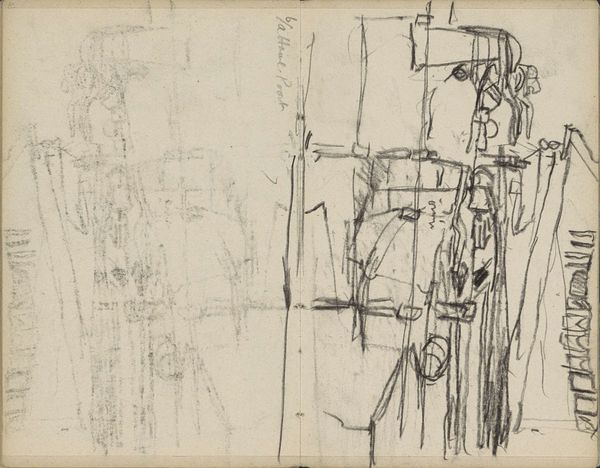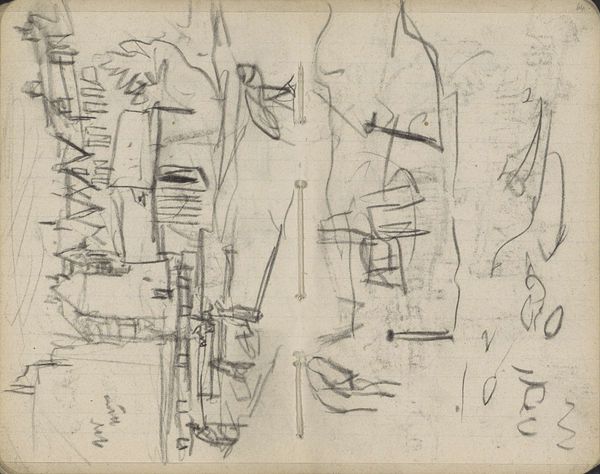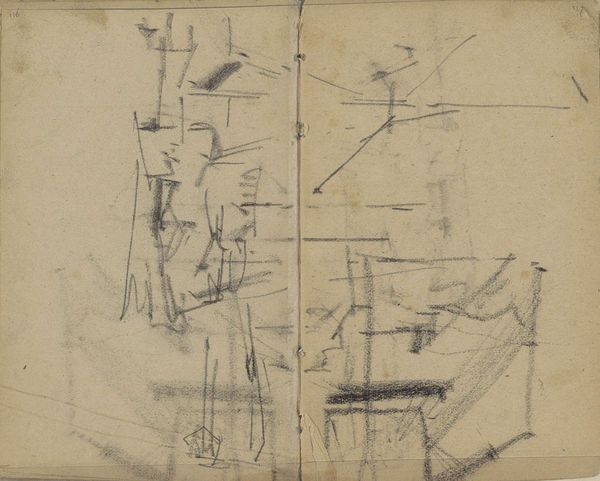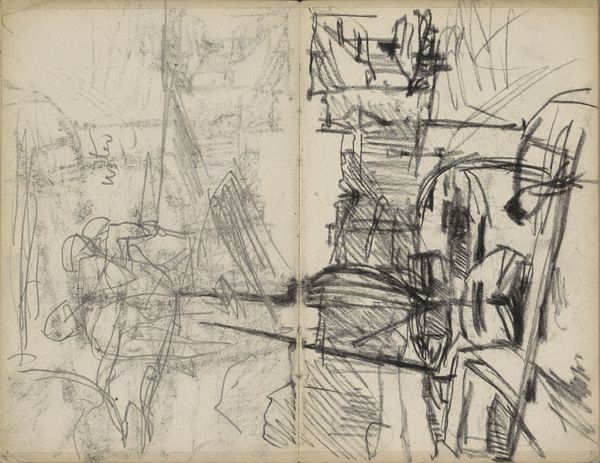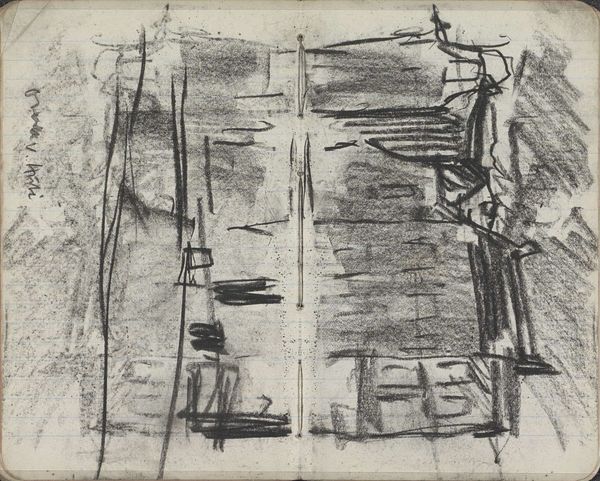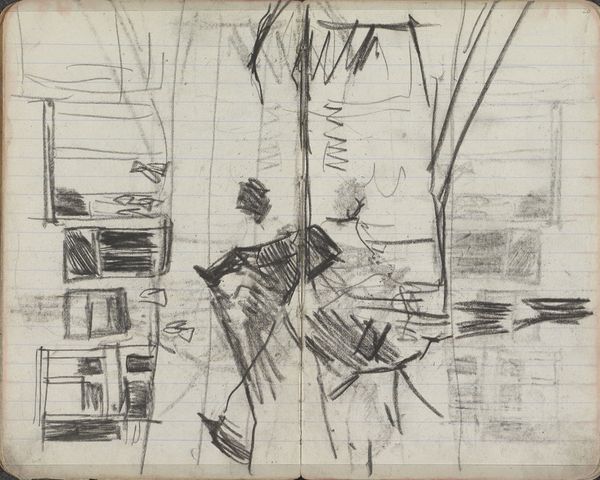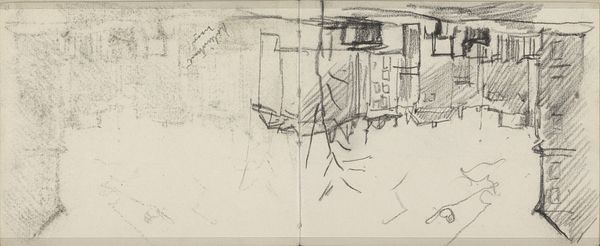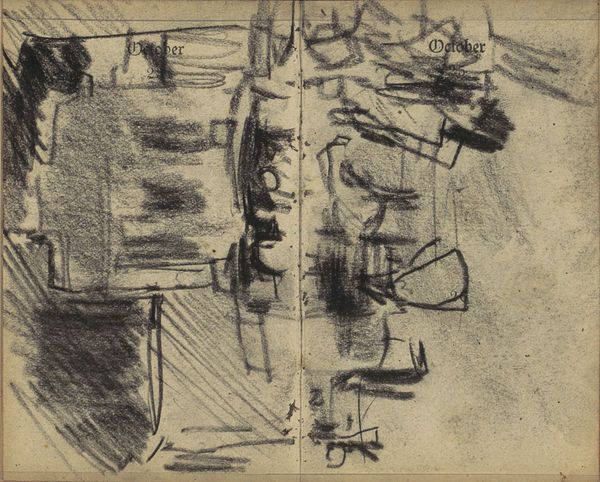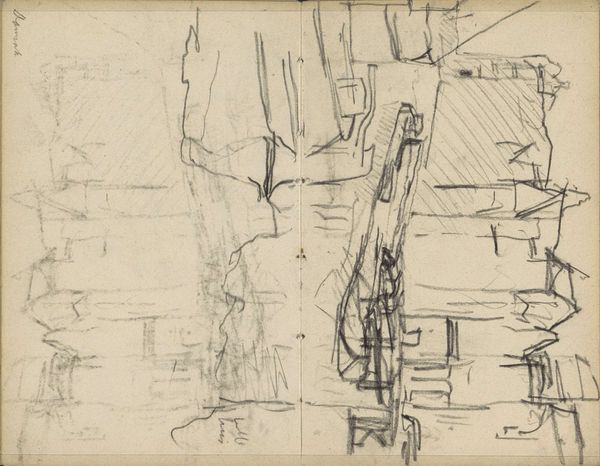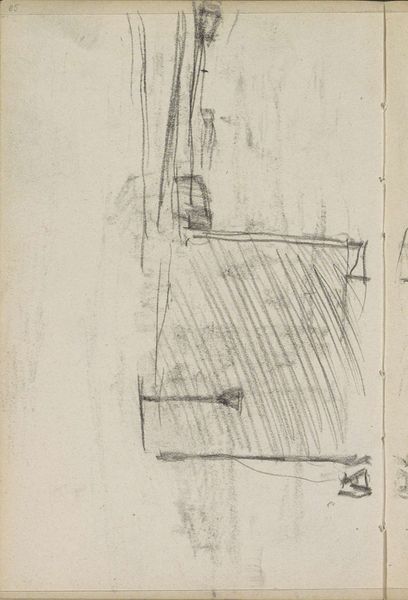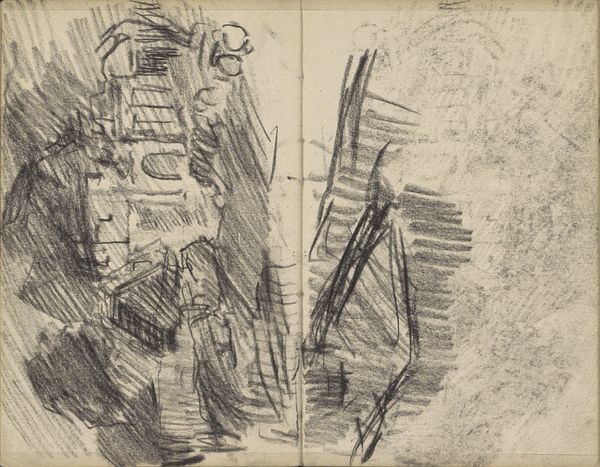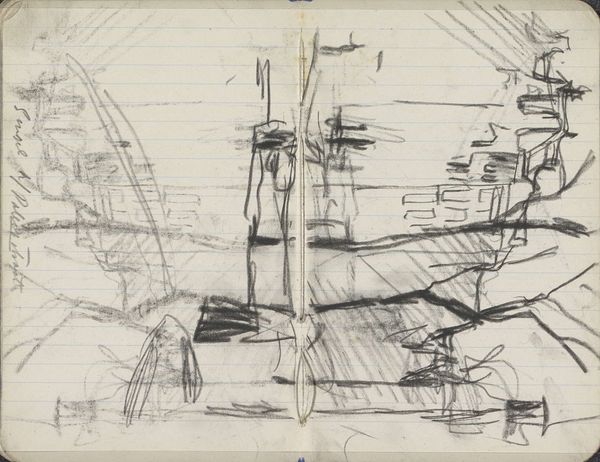
Gezicht op de Prinseneilandsgracht met de Sloterdijkerbrug 1907 - 1909
0:00
0:00
Copyright: Rijks Museum: Open Domain
Editor: This pen and pencil drawing by George Hendrik Breitner, created between 1907 and 1909, captures a view of the Prinseneilandsgracht with the Sloterdijkerbrug. It has such a raw and immediate feel. How do you see this sketch in terms of Breitner's overall practice? Curator: Well, looking at this work from a materialist perspective, I see more than just a simple landscape sketch. The choice of pencil and pen tells us something about accessibility and perhaps urgency. These are readily available materials, pointing towards the democratization of art production. It speaks to Breitner's position within the evolving urban landscape of Amsterdam. He wasn't just observing, but actively participating and documenting the changing face of labor and daily life around the docks. Editor: That's interesting. I hadn't thought about the implications of using such common materials. Does the sketch's incompleteness, especially the blank section on the left, also relate to this materialist approach? Curator: Absolutely! The unfinished quality directs us to consider the *process* of creation itself. This isn't a polished, finished product intended for elite consumption. It's a working document, recording observations and fleeting moments in the port. Breitner seems less concerned with the art object itself and more interested in capturing the raw energy of the city. How does seeing it this way affect your interpretation? Editor: It shifts my focus away from aesthetic beauty and directs it toward the physical and social reality Breitner was engaging with. The sketch becomes a document of labor, a fleeting glimpse into a specific moment of production. Curator: Precisely! This reinforces the value in exploring art through the lens of its production, consumption and material nature. Editor: This perspective is insightful, highlighting how materials and processes embed social commentary. Curator: It changes how we think about art history. Thanks to this materialist reading, what once seemed like a quick sketch reveals much more about the economic and social context of early 20th-century Amsterdam.
Comments
No comments
Be the first to comment and join the conversation on the ultimate creative platform.
